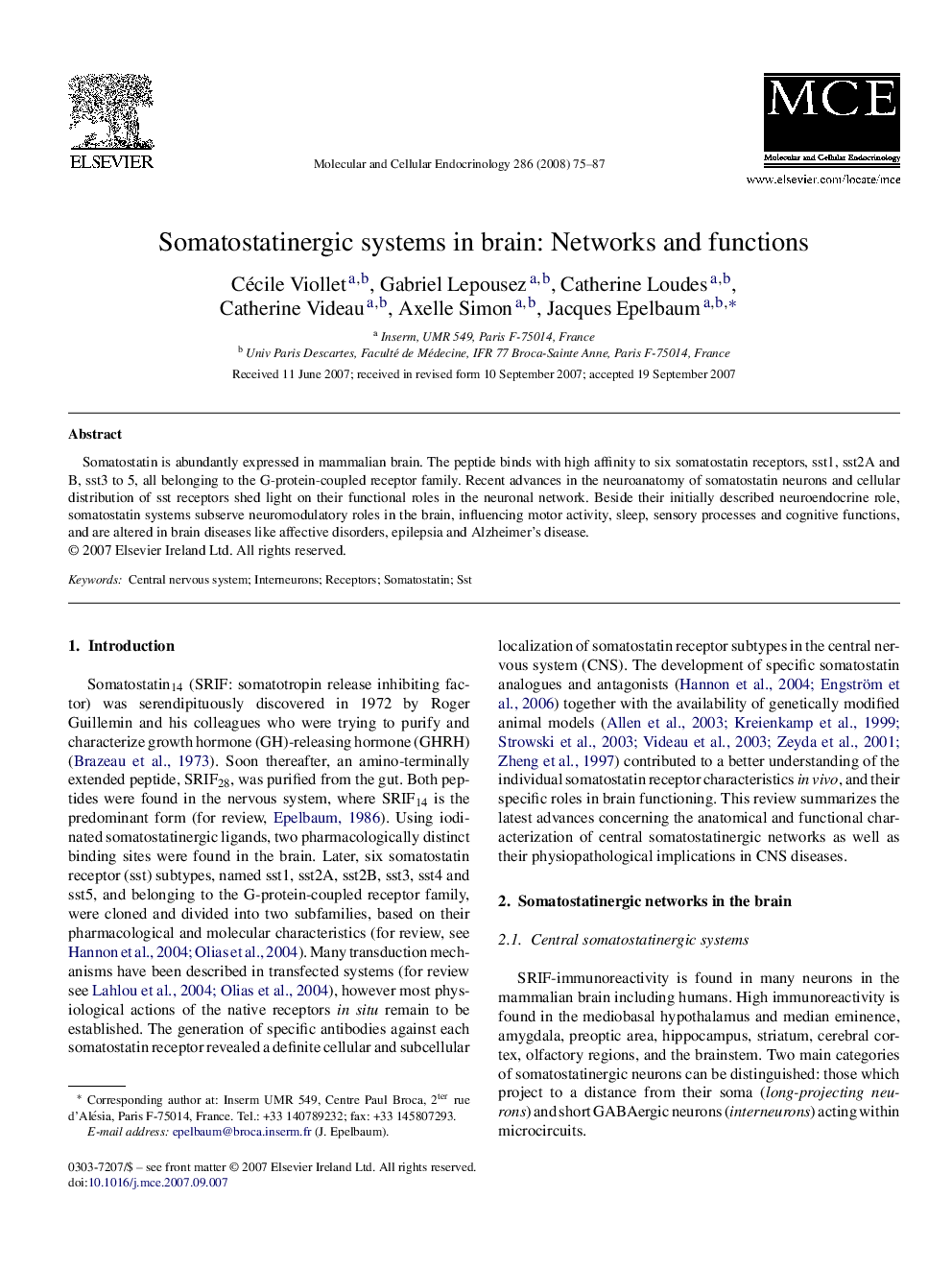| Article ID | Journal | Published Year | Pages | File Type |
|---|---|---|---|---|
| 2197650 | Molecular and Cellular Endocrinology | 2008 | 13 Pages |
Abstract
Somatostatin is abundantly expressed in mammalian brain. The peptide binds with high affinity to six somatostatin receptors, sst1, sst2A and B, sst3 to 5, all belonging to the G-protein-coupled receptor family. Recent advances in the neuroanatomy of somatostatin neurons and cellular distribution of sst receptors shed light on their functional roles in the neuronal network. Beside their initially described neuroendocrine role, somatostatin systems subserve neuromodulatory roles in the brain, influencing motor activity, sleep, sensory processes and cognitive functions, and are altered in brain diseases like affective disorders, epilepsia and Alzheimer's disease.
Related Topics
Life Sciences
Biochemistry, Genetics and Molecular Biology
Cell Biology
Authors
Cécile Viollet, Gabriel Lepousez, Catherine Loudes, Catherine Videau, Axelle Simon, Jacques Epelbaum,
